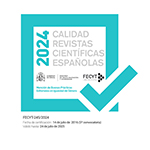Theatre used in teaching foreign languages"Dramatisation" as a model and action
Abstract
Using theatre in foreign language teaching is one of the most studied and exploited strategies in the classroom. This has been clearly documented in the many studies that have been carried out, both advocating and criticising its practical use as a pedagogical tool. This article attempts to delve further into the various methods which apply the theatre genre to learning a foreign language and works from the basis of two perspectives: the theatre as “action” –the active role of the student as an actor- contrasted with the theatre as a “model” –the student plays a role as language receiver and spectator. The first part of this article focuses on various theatre practices in the classroom: representing a play and resorting to commonly used simulation games. Later, seeing theatre as a socio-cultural and linguistic model, this article analyses one of the primary teaching materials designed for teaching Spanish as a foreign language, namely, the series Hablamos Español.Downloads
Article download
License
In order to support the global exchange of knowledge, the journal Didáctica. Lengua y Literatura is allowing unrestricted access to its content as from its publication in this electronic edition, and as such it is an open-access journal. The originals published in this journal are the property of the Complutense University of Madrid and any reproduction thereof in full or in part must cite the source. All content is distributed under a Creative Commons Attribution 4.0 use and distribution licence (CC BY 4.0). This circumstance must be expressly stated in these terms where necessary. You can view the summary and the complete legal text of the licence.










